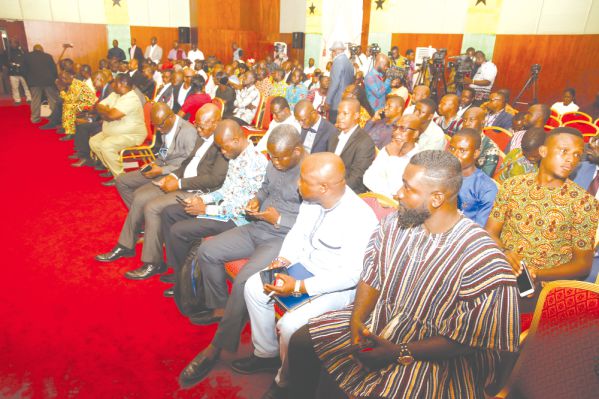
The other journalist
I wonder if the title above suits this narrative, but it might in the end justify why I have so chosen it to be.
Corporate organisations, event organisers and a host of others whose activities are covered by journalists would have had, at one time or another, contact with the other “journalist.”
These are just plain dubious characters who parade themselves as journalists, gate-crashing events that are covered by the media for publication or broadcast. They are not journalists.
However, they dress more formal than the real media men and women and can be more convincing when they approach event organisers.
Their modus operandi is to scout media notice boards or visit the International Press Centre (IPC) notice board to look for media events.
Then they take the dates and polish themselves up, with notepads and mini duffel bags in their armpits and head to ‘cover’ such events.
Some hang what might look like name-tags on their necks to create the impression they are on an official assignment for a particular media organisation.
They are seen mingling with attendees, but what they are actually up to is to look around for mobile phones, ipads, laptop computers and anything of value that someone might leave on their seat in the performance of their duties and quickly snatch and stuff them in the duffel bags and vamoose.
Item 13
When they are unable to score a hit as I have narrated, they wait for what is known in media parlance as Item 13. This is the time the events have ended and the organisers offer refreshments to media practitioners.
The other “Journalists” can be seen falling over themselves to pick small chops and drinks at times in an embarrassing manner.
Item 13 also involves what we refer to as “soli” where small envelopes with cash are given out as transport fare to journalists who cover such events.
And this is where the other “journalist” presents himself or herself as representing so and so media organisation.
The name-tag he/she presented at the start of the programme is removed so as not to attract scrutiny at this time when he/she comes demanding the “Soli.”
At times, these fraudsters mention some outlandish names as the organisations they represent, but because there is pressure on these event organisers in attending to many people, they are forced to dole out monies to these fraudsters.
And there are lots of them around.
Targeted
Party political events are the most targeted by these fraudsters. Because political parties want to market themselves as much as they can, these characters are able to ply their trade more effectively.
Once a press officer in a political party office, I was in charge of this Item 13 for my colleague journalists.
Having noticed this phenomenon, I advised my boss that we did not cater for media organisations we did not send an invitation to.
This worked, but I became enemy number one to these people.
But, in being mindful of these characters, I always left a window of attention for genuine pressmen who we inadvertently failed to invite and who showed up all the same.
I am told these characters are currently referred to as paparazzi. Now that we have as many media organisations as there are spaces for them, this phenomenon has ballooned to intolerable levels.
Members
I don’t know how many journalists are registered as member of the Ghana Journalists Association (GJA), but in addition to the GJA membership identification cards, the various media organisations must have clearly identifiable identification tags for their staff so that event organisers can crosscheck when they are in doubt.
I have been asked many times as to who qualifies to cover an event. In fact, this depends largely on the nature of the event, function or whatever.
In any case, a reporter, cameraman, producer, soundman and lightsman represent the electronic media, but the print media could send just a reporter and a cameraman. These days, the reporter goes with a camera.
These journalists must, at all times, carry identification tags, especially in an era where anyone with a mobile phone can pretend to be a journalist, using the device as a recording tool.
Name shame
Methinks it is proper for genuine practitioners to point these paparazzi out at media events so we begin to weed them out.
I have had people tell me that we journalists only cover events because of food and drinks, a stigma that practitioners are hard put to parry away.
When I had to interview the late Chief Obafemi Awolowo, once a very powerful politician in Nigeria, for a foreign magazine and it was a lunchtime assignment, my ‘employer’ made funds available for me to pay for my own food.
Indeed, Awolowo offered to pay the bill after the meal and interview, but I declined.
This is the case in many jurisdictions all over the world.
I must admit it is a daunting task to easily identify these paparazzi because of the numerous media organisations in the country.
Very soon, the number of journalists covering an event will be more than participants of the event.
But once a conscious effort is put in by the genuine practitioners, the charlatans can be weeded out.
Responsibility
Organisers of media events also have a responsibility to ensure that they have the right calibre of journalists covering their functions.
One sure way is to designate a particular area for the media so they are set apart from other invitees.
This will offer an opportunity for the journalists to know and relate with their professional colleagues they otherwise would not have known.
It is in line with this that I support the call that journalists must be well paid in our part of the world.
This way, we shall save and uphold our professional integrity and get the other “journalist” out of the way.
The writer is a lecturer